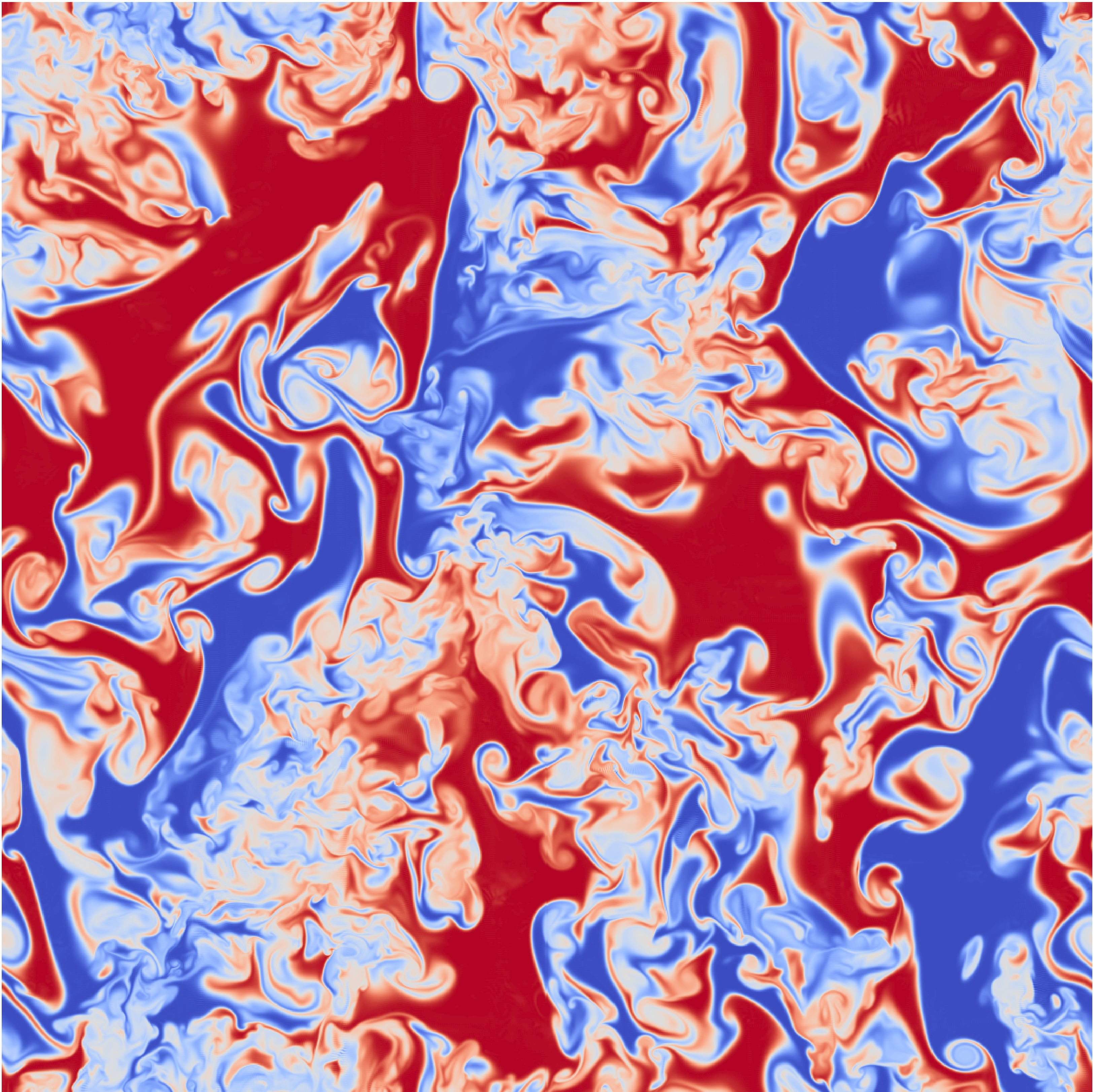Data from a Los Alamos National Lab direct numerical simulation (DNS) of homogeneous buoyancy driven turbulence on a 1024*3 periodic grid has been incorported into the Johns Hopkins Turbulence Databases. Access to the data is facilitated by a Web services interface that permits numerical experiments to be run across the Internet. C, Fortran and Matlab interfaces are layered above Web services so that scientists can use familiar programming tools on their client platforms. Calls to fetch subsets of the data can be made directly from within a program being executed on the client’s platform. Manual queries for data at individual points and times via web-browser are also supported. Evaluation of velocity and pressure at arbitrary points and time is supported using interpolations executed on the database nodes. Spatial differentiation using various order approximations (up to 8th order) and filtering are also supported (for details, see documentation page). Particle tracking can be performed both forward and backward in time using a second order accurate Runge-Kutta integration scheme. Subsets of the data can be downloaded in hdf5 file format using the data cutout service.
The Johns Hopkins Turbulence Databases are located at http://turbulence.pha.jhu.edu/. Descriptions of the data can be found at http://turbulence.pha.jhu.edu/datasets.htmand include a Los Alamos National Lab direct numerical simulation (DNS) of homogeneous buoyancy driven turbulence on a 1024*3 periodic grid provided by Daniel Livescu. A full description of Livescu’s data is at http://turbulence.pha.jhu.edu/docs/README-HBDT.pdf.
Queries can be run using http://turbulence.pha.jhu.edu/webquery/query.aspx. Select the ‘mixing’ dataset on the drop-down box for the Livescu’s dataset. You can perform these small web queries without an authentication token. Additional queries are available using C, Fortran, Matlab, or .Net frameworks. Instructions for these queries are at http://turbulence.pha.jhu.edu/instructionswebserv.htm.
